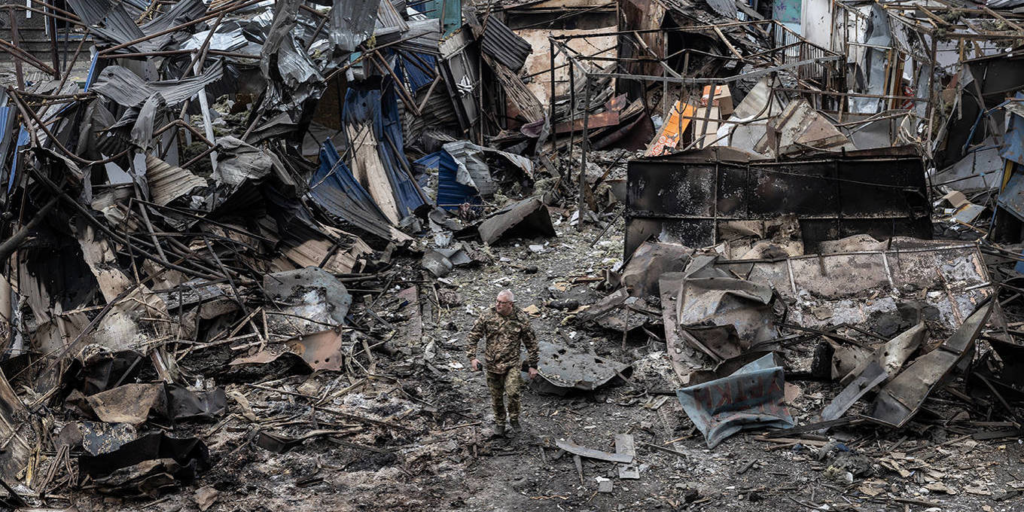Putin Outmaneuvers Trump in Ukraine Negotiations: 100 Days of Inaction
Vladimir Putin and his negotiating team have clearly succeeded in leading their US counterparts astray, falsely expressing support for a peace process in Ukraine that they have no intention of pursuing. After weeks of this, even the most inexperienced negotiators should have realized what was happening.

It has now been nearly 100 days since Donald Trump returned to the US presidency, yet Russian missiles continue to devastate Ukrainian civilians. Despite Trump’s promise to end the war on his “first day in office,” peace remains elusive. When will the administration recognize its failure?
Trump’s initial demands were simple: stop the fighting and start negotiating. After his first conversation with Russian President Vladimir Putin, Trump claimed a complete ceasefire was imminent, and Ukrainian President Volodymyr Zelensky expressed support for the idea.
However, Putin and his team at the Kremlin have successfully led Trump’s inexperienced negotiator, Steve Witkoff, into a web of complex conditions and impossible demands. After several weeks of negotiations, it should have become apparent to even the most naive negotiators that Putin had no intention of agreeing to a ceasefire or adhering to Trump’s plan.
Since launching his full-scale invasion in February 2022, Putin has relied heavily on Russian military might to force Ukraine into submission. Initially invading with around 200,000 soldiers, the force has now grown to roughly 600,000 through selective mobilizations and massive financial incentives. Despite suffering staggering casualties—approximately 700,000 to 800,000 total losses, including over 200,000 dead—the Russian army controls less territory in Ukraine than it did three years ago, holding just 18.3% of the country.
In military terms, Putin’s war has been a resounding failure. While he may still believe his forces will eventually break through, few independent analysts share that optimism. Russia may be able to sacrifice more troops and resources than Ukraine, but it cannot instill the necessary will to fight among its forces. Defending has proven much easier than advancing, and as a result, Putin increasingly depends on Trump to deliver a perceived victory.
To that end, Putin has deployed every resource to manipulate Trump. Knowing Trump’s vulnerability to flattery, Putin has gone to extreme lengths to court the US president. He has argued that the 2020 US presidential election was “stolen” and claimed that the war never would have happened if Trump were still in office. Putin even went so far as to say he prayed for Trump following an assassination attempt in 2024 and commissioned a portrait of Trump as a gift.
In addition to flattery, the Russians have dangled lucrative business prospects before Trump and Witkoff. During their first meeting in Riyadh, Putin’s team presented a list of multi-billion-dollar investment opportunities that would supposedly open up if Trump abandoned Ukraine and lifted sanctions against Russia. According to Witkoff, a large portion of his most recent meeting with Putin was devoted to this topic.
Both tactics have clearly worked. There has been no ceasefire, nor are there signs that Putin is ready to agree to one. He continues to launch attacks on Ukrainian cities with little regard for the consequences.
The Kremlin’s demands in these so-called negotiations are twofold. The first is for Ukraine to cede control of four regions: Luhansk, Donetsk, Zaporizhzhia, and Kherson. It appears that Witkoff has already conceded on this point, with the US now willing to recognize these territories as part of Russia.
However, Russia does not fully control these regions. The regional capitals of Zaporizhzhia and Kherson—cities with a combined population of one million before the war—still fly the Ukrainian flag, and no government in Kyiv could survive surrendering them. While Ukraine might accept a frozen conflict along the current front line, nothing more than that seems feasible.
The second demand is for security dominance over the rest of Ukraine. Putin seeks to block any future Western military presence or support for Ukraine, and Trump seems prepared to promise this, having already suggested that Ukraine should abandon its NATO ambitions.
However, this is where the Europeans come in. Neither Putin nor Trump wants European leaders involved in the negotiations, but that’s to their detriment. As long as Europe remains firm in its commitment to supporting Ukraine financially and militarily, any agreements between Trump and Putin will have little impact on the ground.
Europe holds a crucial advantage. If European leaders stand their ground, they can prevent a shameful betrayal of Ukraine, similar to the infamous Munich Agreement. They must continue to provide unwavering support for Ukraine’s defense and sovereignty, regardless of what agreements are made elsewhere.
In theory, Trump could shift course by applying pressure on Putin and increasing US support for Ukraine. Should he choose this route, a ceasefire might become possible. Otherwise, Trump will remain a passive participant in Putin’s manipulation, as the Russian president continues his ruthless campaign with no sign of slowing down.